Planning worship?
Check out our sister site, ZeteoSearch.org,
for 20+ additional resources related to your search.
- |
User Links
Person Results
J. A. P. Schulz
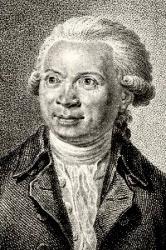
1747 - 1800 Person Name: fr. Schulz Topics: Activity; Charity; Christians Duties; Church Work of; Communion of Saints At Lord's Table; Consecration Of Possessions Arranger of "SOLNEY" in Laudes Domini Johann Abraham Peter Schulz Germany 1747-1800. Born at Luneburg, Germany, son of a baker, he attended St Michaelis school in Luneburg and studied organ, then the Johanneum from 1759-1764. In 1765 he was a student of composer, Johann Kimberger, and then taught in Berlin himself. In 1768 Kimberger recommended Schulz for the position of music teacher and accompanist to the Polish Princess Sapieha Woiwodin von Smolensk. Schulz moved to Berlin and traveled with her for three years performing throughout Europe, where he came in contact with many new musical ideas. He married Catharina Maria Gercken, and they had a daughter, Celle. He served as the conductor of the French Theatre in Berlin from 1776-1780. From 1786-1787 he was the Kapellmeister of Prince Henry in Rheinsberg. He began writing operas in 1785 and became musical director of the Berlin French theatre. Schulz went on to serve as Court Kapellmeister in Copenhagen from 1787-1795 before returning to Berlin. In Copenhagen the music library burned down, and he had a breakdown in health from trying to save it. His health suffered further from the effects of a shipwreck he experienced in 1796. Schulz wrote seven operas, stage music, oratorios, and cantatas, as well as piano pieces, folk songs, and church music. He also wrote articles on music theory for Johann Georg Sulzer’s ‘Allgemeine Theorie der schonen Kunste’ in four volumes. He died at Schwedt an der Oder, Germany.
John Perry
J. A. P. Schulz
Johann Balthasar König
1691 - 1758 Person Name: J. B. Konig, 1738 Topics: Consecration Of Life; Consecration Of Powers; Consecration Of Self; Consecration Entire; Consecration Of Goods; The Church and the Kingdom of God Evangelism; Self-Dedication Composer of "ELLERKER" in Methodist Hymn and Tune Book Johann Balthasar König; b. 1691, Waltershausen, near Gotha; d. 1758, Frankfort
Evangelical Lutheran Hymnal, 1908
Johann Balthasar König
Robert Schumann
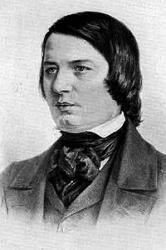
1810 - 1856 Person Name: Robert A. Schumann Topics: Brotherhoods and Men's Guilds; Church Work; Ministry, The Consecration and Duties of; Preaching Composer (arr. from) of "CANONBURY" in The Hymnal Robert Alexander Schumann DM Germany 1810-1856. Born at Swickau, Saxony, Germany, the last child of a novelist, bookseller, and publisher, he began composing music at age seven. He received general music instruction at the local high school and worked to create his own compositions. Some of his works were considered admirable for his age. He even composed music congruent to the personalities of friends, who took note of the anomaly. He studied famous poets and philosophers and was impressed with the works of other famous composers of the time. After his father’s death in 1826, he went to Leipzig to study law (to meet the terms of his inheritance). In 1829 he continued law studies in Heidelberg, where he became a lifelong member of Corps Saxo-Borussia Heidelberg. In 1830 he left the study of law to return to music, intending to pursue a career as a virtuoso pianist. His teacher, Friedrich Wieck, assured him he could become the finest pianist in Europe, but an injury to his right hand (from a practicing method) ended that dream. He then focused his energies on composition, and studied under Heinrich Dorn, a German composer and conductor of the Leipzig opera. Schumann visited relatives in Zwickau and Schneeberg and performed at a concert given by Clara Wieck, age 13 at the time. In 1834 he published ‘A new journal for music’, praising some past composers and deriding others. He met Felix Mendelssohn at Wieck’s house in Leigzig and lauded the greatness of his compositions, along with those of Johannes Brahms. He also wrote a work, hoping to use proceeds from its sale towards a monument for Beethoven, whom he highly admired. He composed symphonies, operas, orchestral and chamber works, and also wrote biographies. Until 1840 he wrote strictly for piano, but then began composing for orchestra and voice. That year he composed 168 songs. He also receive a Doctorate degree from the University of Jena that year. An aesthete and influential music critic, he was one of the most regarded composers of the Romantic era. He published his works in the ‘New journal for music’, which he co-founded. In 1840, against the wishes of his father, he married Clara Wieck, daughter of his former teacher, and they had four children: Marie, Julie, Eugenie, and Felix. Clara also composed music and had a considerable concert career, the earnings from which formed a substantial part of her father’s fortune. In 1841 he wrote 2 of his 4 symphonies. In 1843 he was awarded a professorship in the Conservatory of Music, which Mendelssohn had founded in Leipzig that same year, When he and Clara went to Russia for her performances, he was questioned as to whether he also was a musician. He harbored resentment for her success as a pianist, which exceeded his ability as a pianist and reputation as a composer. From 1844-1853 he was engaged in setting Goethe’s Faust to music, but he began having persistent nervous prostration and developed neurasthenia (nervous fears of things, like metal objects and drugs). In 1846 he felt he had recovered and began traveling to Vienna, Prague, and Berlin, where he was received with enthusiasm. His only opera was written in 1848, and an orchestral work in 1849. In 1850 he succeeded Ferdinand Hiller as musical director at Dusseldorf, but was a poor conductor and soon aroused the opposition of the musicians, claiming he was impossible on the platform. From 1850-1854 he composed a wide variety of genres, but critics have considered his works during this period inferior to earlier works. In 1851 he visited Switzerland, Belgium, and returned to Leipzig. That year he finished his fourth symphony. He then went to Dusseldorf and began editing his complete works and making an anthology on the subject of music. He again was plagued with imaginary voices (angels, ghosts or demons) and in 1854 jumped off a bridge into the Rhine River, but was rescued by boatmen and taken home. For the last two years of his life, after the attempted suicide, Schumann was confined to a sanitarium in Endenich near Bonn, at his own request, and his wife was not allowed to see him. She finally saw him two days before he died, but he was unable to speak. He was diagnosed with psychotic melancholia, but died of pneumonia without recovering from the mental illness. Speculations as to the cause of his late term maladies was that he may have suffered from syphilis, contracted early in life, and treated with mercury, unknown as a neurological poison at the time. A report on his autopsy said he had a tumor at the base of the brain. It is also surmised he may have had bipolar disorder, accounting for mood swings and changes in his productivity. From the time of his death Clara devoted herself to the performance and interpretation of her husband’s works.
John Perry
Robert Schumann
Richard Proulx
1937 - 2010 Person Name: Richard Proulx, 1937- Topics: Art and Learning; Celebration of Faith; Consecration; Dedication of Church Buildgin; Divine Inspiration; Gifts in Creation; Holy Spirit; House of God ; Our Gifts to God Composer of "CASTLEWOOD" in Together in Song Richard Proulx (b. St. Paul, MN, April 3, 1937; d. Chicago, IL, February 18, 2010). A composer, conductor, and teacher, Proulx was director of music at the Holy Name Cathedral in Chicago, Illinois (1980-1997); before that he was organist and choirmaster at St. Thomas' Episcopal Church in Seattle, Washington. He contributed his expertise to the Roman Catholic Worship III (1986), The Episcopal Hymnal 1982, The United Methodist Hymnal (1989), and the ecumenical A New Hymnal for Colleges and Schools (1992). He was educated at the University of Minnesota, MacPhail College of Music in Minneapolis, Minnesota, St. John's Abbey in Collegeville, Minnesota, and the Royal School of Church Music in England. He composed more than 250 works.
Bert Polman
Richard Proulx
Healey Willan
1880 - 1968 Person Name: Healey Willan, 1880- Topics: God The Lord Jesus Christ - His Sufferings and Death; The Church of God The Sacraments - Baptism; The Church of God The Sacraments - The Lord's Supper; The Life in Christ Consecration and Discipleship; The Gospel Call Arranger (Faux Bourdon) of "COMMUNION (ROCKINGHAM)" in The Hymnary of the United Church of Canada Healey Willan (b. Balham, London, England, October 12, 1880; d. Toronto, Ontario, February 16, 1968), theory teacher, composer and organist, was born into an Anglo-Catholic family in England and served several churches in the London area, becoming known especially for his adaptations of Gregorian chant to be able to be sung in English translation. In 1913 he moved to Canada where he led the theory department and was organist at the Toronto Conservatory of Music. He also was organist at St. Paul’s, Canada’s largest Anglican church, and after 1921 at the smaller Church of St. Mary Magdalene. By invitation, he composed an anthem for the coronation of Queen Elizabeth II, a singular honor for one not residing in England.
Emily Brink
Healey Willan
Johann Hermann Schein
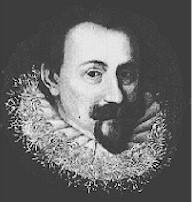
1586 - 1630 Person Name: Johann Hermann Schein, 1586 - 1630 Topics: The Church of God The Lord's Supper; The Life in Christ Love and Gratitude; The Life in Christ Consecration and Discipleship Composer of "EISENACH" in The Hymnary Schein, Johann Hermann, son of Hieronymus Schein, pastor at Griinhain, near Annaberg, in Saxony, was born at Grünhain, Jan. 20,1586. He matriculated at the University of Leipzig in 1607, and studied there for four years. Thereafter he acted for some time as a private tutor, including two years with a family at Weissenfels. On May 21, 1615, he was appointed Capellmeister, at the court of Duke Johann Ernst, of Sachse-Weimar; and in 1616 he became cantor of I3t. Thomas's Church, and music director at Leipzig, in succession to Seth Calvisius (d. Nov. 24, 1615). This post he held till his death, at Leipzig, Nov. 19, 1630.
Schein was one of the most distinguished musicians of his time, both as an original composer, and as a harmoniser of the works of others. As a hymnwriter he was not so prolific, or so noteworthy. Most of his hymns were written on the deaths of his children or friends, e.g. on seven of his children, and on his first wife. They appeared mostly in broadsheet form, and were included, along with his original melodies, in his Cantional oder Gesang-Buch Augspurgischer Confession, Leipzig, 1627; 2nd ed., 1645. [Both in Wernigerode Library.]
Those of Schein's hymns which have passed into English are:—
i. Machs mit mir, Gott, nach deiner Güt. For the Dying. First published, as a broadsheet, at Leipzig, 1628, as a Trost-Liedlein á 5 (i.e. for 5 voices), &c. [Berlin Library.] The words, the melody, and the five-part setting, are all by Schein. It was written for, and first used at, the funeral, on Dec. 15, 1628, of Margarita, wife of Caspar Werner, a builder and town councillor at Leipzig, and a churchwarden of St. Thomas's. It is in 6 stanzas of 6 lines; the initial letters of 11. 1, 3, in st. i.-iv., forming the name Margarita; and the W of st. v. 1. 1 standing for Werner. In Schein's Cantional, 1645, No. 303 (marked as Trost-Liedlein, Joh. Herm. Scheins, á 5), and later hymn-books, as e.g. the Unverfäschter Liedersegen, 1851, No. 830, st. vi. was omitted. It is Schein's finest production, and one of the best German hymns for the sick and dying. Translated as:—
Deal with me, God, in mercy now. This is a good and full translation by Miss Winkworth, in her Chorale Book for England, 1863, No. 191, set to Schein's melody of 1628.
ii. Mein Gott und Herr, ach sei nicht fern. For the Dying. First published, with his name, in his Cantional, 1627, No. 262, in 9 stanzas of 6 lines. The initial letters of the stanzas give the name Margarita, probably one of the daughters who predeceased him. It is included, in 5 st., in the 164-8, and later eds., of Crüger's Praxis. The translation in common use is:—
My Lord and God, go not away. A good tr. of st. i., ii., iv., v., vii., by A. T. Russell, as No. 254, in his Psalms & Hymns, 1851. [Rev. James Mearns, M.A.]
--Excerpts from John Julian, Dictionary of Hymnology (1907)
Johann Hermann Schein
R. W. Dixon
1806 - 1876 Topics: Consecration of Churches Composer of "STAINCLIFFE" in The Church Hymnal Dixon, Robert William. (Wapping, Middlesex, England, c.1805--December 6, 1876, Hastings, Sussex).
"To R.W. Dixon, Esq., J.P. and D.L. (Fellow of the Hist. Soc. of Gt. Br.), for a large number of must tuneful and original compositions from his private MSS."
-Preface, Burney Tune-Book. (1875). London: F. Pitman. [CASTLE EDEN is #168]
See also: http://freepages.genealogy.rootsweb.ancestry.com/~elliff/p3.htm#i563 for Elliff name and variants in the UK for census information, which lists his occupation as follows:
Occupation 7 Apr 1861 J.P. & Commissioner of Taxes. (1861 Census Returns - RG9/3701).
--In part from DNAH Archives.
R. W. Dixon
Thomas Grigg
Person Name: T. Grigg Topics: Consecration of Churches Composer of "TIVERTON" in The Church Hymnal
Thomas Grigg
Nicolaus Selneccer
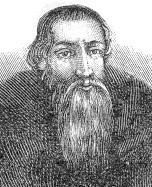
1530 - 1592 Person Name: Nicolaus Selnecker Topics: Church Year Trinity Season; Trinity, Fifth Sunday; Confirmation; Consecration; Faithfulness to the Word of God Author of "Let Me Be Thine Forever" in The Hymnal and Order of Service Selnecker, Nicolaus, D.D., son of Georg Selnecker (Selneccer, Schellenecker, who was protonotarius to the Nürnberg magistracy, but lived at Hersbruck near Nürnberg) was born at Hersbruck Dec. 5, 1532. In 1536 he was removed to Nürnberg, and became during his school time, when only twelve years old, organist at the chapel in the Kaiserburg there. He went to the university of Wittenberg in 1550 (where he became a favourite pupil of Melanchthon), graduated M.A. on July 31, 1554, and subsequently lectured as a privat-docent, sometimes to 200 students. In the end of 1557 he was appointed second court preacher at Dresden, and tutor to the heir apparent Prince Alexander, having also to supervise the education of the choirboys of the royal chapel. He was ordained at Wittenberg Jan. 6, 1558. The principal theologians at the Saxon court at that time were inclined to follow Melanchthon's lead and to approximate to Calvin's teachings regarding Consubstantiation. When therefore Selnecker thought it his duty openly to declare his adhesion to strict Lutheranism, he found his position almost untenable. When Martin Hoffmann of the Neustadt church in Dresden preached against the Elector August's passion for game preserving, Selnecker took Hoffmann's part. His enemies took advantage of this, and managed so that after Hoffmann had been expelled from Dresden, in August, 1564, Selnecker was requested to seek work elsewhere. He preached his farewell sermon at Dresden on March 15, 1565, and on the 26th he entered on his new office of Professor of Theology at Jena.
After the siege of Gotha, Duke Johann Wilhelm of Saxony recalled Wigand and other professors of Theology who had been expelled from Jena, in 1561, as adherents of Flaeius; and Selnecker, not being so extreme a Lutheran as they, had to leave Jena. Thereupon the Elector August again received him into favour, appointed him professor of Theology at Leipzig, and also pastor of St. Thomas's church and Superintendent of Leipzig. He entered on his duties at Leipzig in August 1568, and for some time worked quietly and successfully. In July 1570 the Elector acceded to the request of Duke Julius of Brunswick for Selnecker's services, and gave Selnecker leave of absence to go to Wolfenbüttel as court preacher and general superintendent. Here he succeeded in inducing the clergy to receive the so-called Saxon Confession, and persevered in zealous visitations of churches, schools, &c. After 1572 he resided at Gandersheim, took an interest in the Gymnasium there, &c. In 1573 he also visited, and drew up a book of Church Order and Discipline for the district of Oldenburg-Jever. But in Brunswick, what with Martin Chemnitz the Superintendent of Brunswick, who was a High Lutheran, the Duke who wished for peace, and the other General Superintendent at Wolfenbüttel, Selnecker found it a difficult matter to work comfortably, and was himself accused of Crypto-Calvinism. He therefore gladly accepted the Elector August's recall to Leipzig, and began to lecture there again in Feb. 1574. In 1576 he was once more appointed pastor of St. Thomas's Church, and Superintendent. At Leipzig the sacramental controversy broke out afresh, and Selnecker became deeply involved therein, lie was then engaged in drawing up the Formula of Concord (meant to unite the Lutherans, but to exclude the Romanists on one hand, and the Calvinists on the other), which was finally revised on May 29, and published on July 22, 1577. The Formula of Concord was so far a success that it was very largely subscribed, but at the same time its authors, and specially Selnecker, were subjected to the most violent abuse both from the High Lutherans and from the Galvinists, so much so that he called 1579 his "year of patience and silence." For a few years immediately thereafter his life was a more peaceful one, and he found time to devote to poetry and music. At this time he assisted greatly in the building up of the famous Motett Choir of St. Thomas's Church, which J. S. Bach afterwards conducted. But on the death of the Elector August in 1586 the real direction of affairs passed into the hands of Dr. Nicolaus Crell, Chancellor to the Elector Christian I., and under his rule the Lutheran clergy were gradually displaced by Melanchthonians and Crypto-Calvinists. When the new court preacher Salmuth began to issue a German Bible with notes in which he clearly taught Calvinism and impugned the Formula of Concord, Selnecker published a pamphlet in opposition, and was in consequence deprived of his offices on May 17, 1589. For a time he stayed on in his own house in Leipzig, and used his pen in controversy. But after haying received, on Oct. 22, notice to cease writing, he thought it prudent to leave Leipzig, He found many sympathisers, and after a short time spent in Halle and then in Magdeburg, he accepted the appointment of Superintendent at Hildesheim. Here he had many anxious and weighty matters to settle, and was finally called on, in 1591, to arbitrate in matters of dispute at Augsburg. Returning from Augsburg in stormy December weather, and being worn out and seriously ill, he reached Hildesheim half dead, and was confined to his room till April. Meantime the Elector Christian I. had suddenly died, and his widow, after deposing the Chancellor Crell, proceeded to recall those whom Crell had banished. Selnecker, spite of his weakness, welcomed the idea of returning to Leipzig, left Hildesheim on May 9, and reached Leipzig on May 19; but only to die. He died at Leipzig, May 24, 1592.
Seluecker, as we have seen, was a prominent figure in the ecclesiastical history of Germany in the latter half of the sixteenth century, and a good illustration of the extremes to which theological controversies were then carried. He was the author of some 175 theological and controversial works, in German and Latin, perhaps the most important being his Institutio Religionis Christianae, Frankfurt, 1572-73. He also ranks, with Helmbold and Ringwaldt, among the most important hymnwriters of the period. Amid the manifold changes and chances of his life he found inspiration and consolation in the study of and recourse to the Psalter, and in his love of music. In Latin verse he published a Scriptural play on the Fall of our First Parents, entitled Theophiania, &c, Wittenberg, 1560 [Brit. Mus.], and a version of the Psalms as Paraphrasis Psalterii, Heinrichstadt, 1573…His German hymns partake for the most part of the objective churchly character of the hymns of the Reformation period, and indeed contain many reminiscences of them. Of the rest, many only too faithfully mirror the misfortunes and changes and conflicts of his life, and are full of personal matter and careless in style. Still there remain not a few worthy of note, in which a genuine piety, a deep and fervent love to the Saviour, and a zeal for the best interests of His Church on earth, are expressed in clear, flowing and musical style.
The hymns by Selnecker which have passed into English are:—
i. Ach bleib bei uns, Herr Jesu Christ. Peace and Orthodoxy. It has sometimes been said of this hymn that st. i., ii. are by Selnecker, and that the rest are a later addition. The opposite however is the case. The full form appeared in theGeistliche Psalmen, &c, Nürnberg, 1611, p. 597, in 9 stanzas, viz.:—
1. Ach bleib bey uns, Herr Jesu Christ.
2. In diser schweren betrübten Zeit.
3. Herr Jesu, hilff, dein Kirch erhalt.
4. Erhalt unns nun bey deinem Wort.
5. Ach Gott es geht gar libel zu.
6. Den stoltzen Geistern wehre doch.
7. Die Sach und Ehr, Herr Jesu Christ.
8. Dein Wort ist unsers Hertzens Trutz.
9. Gib dass wir leben in deim Wort.
The text of 1611 is in H. Thiele's ed. of Selnecker's Geistliche Lieder, 1855, p. 31, and in the Berlin Geistliche Lieder, ed. 1863, No. 408.
The translations in common use from this text:—
1. Lord Jesus with Thy children stay. This is a tr. of st. 1, 2, 8, 6, 9, 3 by J. Swertner in the Moravian Hymn Book 1789, No. 6 (1886, No. 6).
2. Ah Jesu Christ, with us abide. This is a good tr. of st. 1-5, 9, by Dr. Kennedy as No. 41 in his Hymnologia Christiana 1863, repeated in Holy Song, 1869.
3. Lord Jesu Christ, with us abide, For round us fall, &c. By Miss Winkworth, of st. 1, 2, in her Chorale Book for England.
4. Forsake us not, 0 Lord be near. Other trs. are-—(1) Abide with us, O Jesu dear," as No. 336, in pt. i. of the Moravian Hymn Book, 1754. (2) "Lord Jesu Christ, with us abide, 'Tis now." By H. J. Buckoll, 1842, p. 69. (3) "With us, Lord Jesus Christ, abide." By Dr. G. Walker, 1860, p. 61.
ii. Christus der wahre Gottes Sohn. Holy Baptism. Translated as:—
Now Christ, the very Son of God.
iii. Hilf, Herr, mein Gott, in dieser Noth.
Cross and Consolatio. In hisChristliche Psalmen, 1587, in 15 lines entitled "Anno 1565. God knows why." It was probably written during his last months at Dresden. It has indeed been said to have been written to comfort Martin Hoffmann, diaconus of the Holy Cross Church at Dresden, on his expulsion after preaching about the Elector August's passion for hunting and game preserving; but the hymn is dated 1565, and Hoffmann left Dresden in August, 1564. The form translated into English is:—
Hilf, Helffer, hilf in Angst und Noth. The translations are:—
1. My Helper, aid: Thy mercy show. By A. T. Russell, in full, as No. 223 in his Psalms and Hymns. 1851.
2. Help, Saviour! help, in fear and need By E. Cronenwett, in full, as No. 410 in the OhioLutheran Hymnal 1880.
3. Help, Jesus, help! in woe, in need. By Miss Manington in her Footprints of the Holy Dead, &c, 1863, p. 8.
iv. Lass mich dein sein und bleiben. Close of Service. This is a beautiful stanza of 8 lines which is very frequently used in Germany at the close of Divine service. It was written as his daily prayer . The translations are:—
1. Let me be Thine for ever, My gracious. This is a tr. of st. i.-iii. by Dr. M. Loy as No. 230 in the Ohio Lutheran Hymnal, 1880.
2. Make me Thine own and keep me Thine. By Miss Winkworth in her Christian Singers of Germany, 1869, p. 152.
v. 0 Herre Gott, in meiner Noth. For the Dying. Founded on Ps. cxvi. 9. Translated as:—- 0 Lord my God, I cry to Thee. This is a good and full tr. by Miss Winkworth in her Lyra Germanica 2nd Ser. 1858, p. 212, and her Chorale Book for England, 1863, No. 192.
vi. Wir danken dir, Herr Jesu Christ, Dass du gen Himmel gefahren bist. Ascension. The translation in common use is:—
We thank Thee, Jesus! dearest Friend, that Thou didst.
Other trs. are—- (1) “Lord Jesus Christ! we thank Thee now." This is No. 334, in pt. i., of the Moravian Hymn Book, 1754. (2) "To Thee, our Lord, all praise be given."
vii. Wir danken dir, o treuer Gott. Absolution. Translated as:—
O Faithful God, thanks be to Thee. By C. H. L. Schnette, in full, as No. 246 in the Ohio Lutheran Hymnal 1880. [Rev. James Mearns, M.A.]
--Excerpts from John Julian, Dictionary of Hymnology (1907)
Nicolaus Selneccer
Henry J. Gauntlett
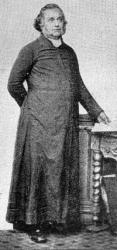
1805 - 1876 Topics: Brotherhoods and Men's Guilds; Church Work; The Ministry Commission of; The Ministry Consecration and Duties of; The Ministry Increase of Composer of "ST. MARK" in The Hymnal Henry J. Gauntlett (b. Wellington, Shropshire, July 9, 1805; d. London, England, February 21, 1876) When he was nine years old, Henry John Gauntlett (b. Wellington, Shropshire, England, 1805; d. Kensington, London, England, 1876) became organist at his father's church in Olney, Buckinghamshire. At his father's insistence he studied law, practicing it until 1844, after which he chose to devote the rest of his life to music. He was an organist in various churches in the London area and became an important figure in the history of British pipe organs. A designer of organs for William Hill's company, Gauntlett extended the organ pedal range and in 1851 took out a patent on electric action for organs. Felix Mendelssohn chose him to play the organ part at the first performance of Elijah in Birmingham, England, in 1846. Gauntlett is said to have composed some ten thousand hymn tunes, most of which have been forgotten. Also a supporter of the use of plainchant in the church, Gauntlett published the Gregorian Hymnal of Matins and Evensong (1844).
Bert Polman
Henry J. Gauntlett


 My Starred Hymns
My Starred Hymns

